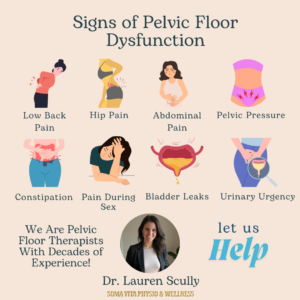When we think about occupational hazards in healthcare, we often focus on back injuries, stress, or burnout. But there’s another, less-discussed risk that disproportionately affects female healthcare workers—pelvic floor dysfunction (PFD), including pelvic organ prolapse (POP).
Healthcare professionals, particularly nurses, physical therapists, and caregivers, engage in frequent heavy lifting, often without adequate support or ergonomic training. Over time, the repeated strain of transferring and assisting patients can place excessive pressure on the pelvic floor, leading to symptoms such as urinary leakage, pressure or heaviness in the pelvic region, and, in severe cases, prolapse of the bladder, uterus, or rectum.
The Link Between Heavy Lifting and Pelvic Floor Dysfunction
The pelvic floor consists of muscles and connective tissue that support the bladder, uterus, and rectum. These structures help maintain continence and organ positioning, but they are vulnerable to excessive strain, particularly under the following conditions:
- Heavy Lifting: Assisting patients with mobility, turning them in bed, or transferring them from wheelchairs to treatment tables generates significant intra-abdominal pressure. Without proper bracing or breath control, this can lead to weakening of pelvic floor muscles over time.
- Prolonged Standing: Many healthcare workers are on their feet for long shifts, which can contribute to venous congestion and increased downward pressure on the pelvic floor.
- Lack of Recovery: Unlike athletes, who train for strength and recovery, healthcare workers often push through fatigue without targeted strengthening or mobility work for their core and pelvic floor.
- Postpartum Considerations: Many female healthcare professionals return to work shortly after childbirth, often before their core and pelvic floor have fully recovered, further increasing their risk for PFD.
What Does the Research Say?
Several studies highlight the prevalence of pelvic floor dysfunction in physically demanding professions:
- A study in the International Urogynecology Journal found that nurses and midwives had a significantly higher risk of pelvic organ prolapse compared to office workers.
- Research on elite female athletes, another population exposed to frequent high-impact and high-pressure activities, found that 30-40% experience some form of pelvic floor dysfunction, including prolapse symptoms.
- Studies suggest that up to 38% of female nurses report symptoms of pelvic organ descent, yet many do not seek treatment due to lack of awareness or stigma.
Why This Matters to Me as a Physical Therapist
As a physical therapist, I am incredibly passionate about this topic because I see firsthand how healthcare providers often put the needs of others before their own. We dedicate ourselves to caring for patients, sometimes at the expense of our own well-being. But prioritizing our health is not selfish—it’s necessary. By taking care of our bodies, we not only improve our own happiness and longevity but also set an example for our families, friends, and even our patients. A strong, healthy body allows us to continue doing what we love without pain or limitation.

Signs & Symptoms of Pelvic Floor Dysfunction
⚡ Pelvic pressure or heaviness after long shifts
💦 Urinary leakage with lifting, coughing, or laughing
🎈 Bulging sensation or feeling like something is “falling out”
🔥 Lower back or SI joint pain that worsens with activity
🛡️ Prevention Strategies: Protecting the Pelvic Floor at Work
Healthcare workers shouldn’t have to choose between their career and their pelvic health. Fortunately, there are ways to mitigate risk and strengthen the pelvic floor while maintaining the ability to care for patients.
1. Engage the Core & Use Proper Lifting Mechanics
- Exhale on exertion: Holding your breath while lifting increases intra-abdominal pressure. Instead, exhale as you lift to reduce strain on the pelvic floor.
- Brace the deep core muscles: Engage the transverse abdominis (deep core) and pelvic floor before lifting.
- Use lifting equipment when available: Mechanical lifts, gait belts, and slide sheets reduce strain.
- Team lifting when possible: Never hesitate to ask for help.
2. Strengthen the Pelvic Floor & Core
- Kegels aren’t always the answer—some people have tight, overactive pelvic floors, which can worsen symptoms.
- Incorporate functional core exercises, such as diaphragmatic breathing, deep core activation, and glute strengthening.
- Work with a pelvic floor physical therapist for personalized guidance.
3. Modify Work Habits
- Change postures frequently: Standing for too long increases pressure, while excessive sitting can lead to tightness.
- Take micro-breaks: Shift weight from side to side, engage core, or perform simple pelvic tilts throughout the day.
- Use supportive footwear to reduce the impact on pelvic stability.
4. Advocate for Workplace Awareness
- Many healthcare facilities emphasize back safety, but pelvic health is rarely part of workplace injury prevention programs.
- Encouraging workplace training on pelvic floor-friendly lifting strategies could reduce long-term injury rates.
- Healthcare professionals deserve access to pelvic health screenings and rehabilitation as part of routine occupational health programs.
🔊 Breaking the Silence: Why This Matters
Pelvic floor dysfunction is not just a “normal” part of working in healthcare—it’s an injury, just like a herniated disc or carpal tunnel syndrome. The difference? It’s rarely talked about, and many healthcare workers suffer in silence.
By raising awareness, advocating for better workplace strategies, and prioritizing pelvic health, we can help healthcare professionals maintain not just their careers, but their quality of life.
Have you or a colleague experienced pelvic floor issues from your job? You’re not alone. If you’re dealing with symptoms of pelvic organ prolapse, incontinence, or pelvic pain, pelvic floor physical therapy can help. At Soma Vita Physio, we specialize in helping healthcare professionals regain strength, function, and confidence.
Additional Resources
Healthcare workers face numerous challenges beyond pelvic floor dysfunction. If you’re experiencing burnout or workplace stress, these resources may help:
Healthcare Burnout – U.S. Surgeon General’s Report on the impact of burnout and strategies for well-being. Read more here
Risk Factors for Burnout in Healthcare Workers – CDC resource outlining key stressors and prevention strategies. Learn more
Supporting Healthcare Workers’ Mental Health – A deep dive into moral injury and ways to help healthcare professionals heal. Explore solutions
- Free Mental Health Support for Healthcare Workers – Three organizations offering free resources and support. Find help here




